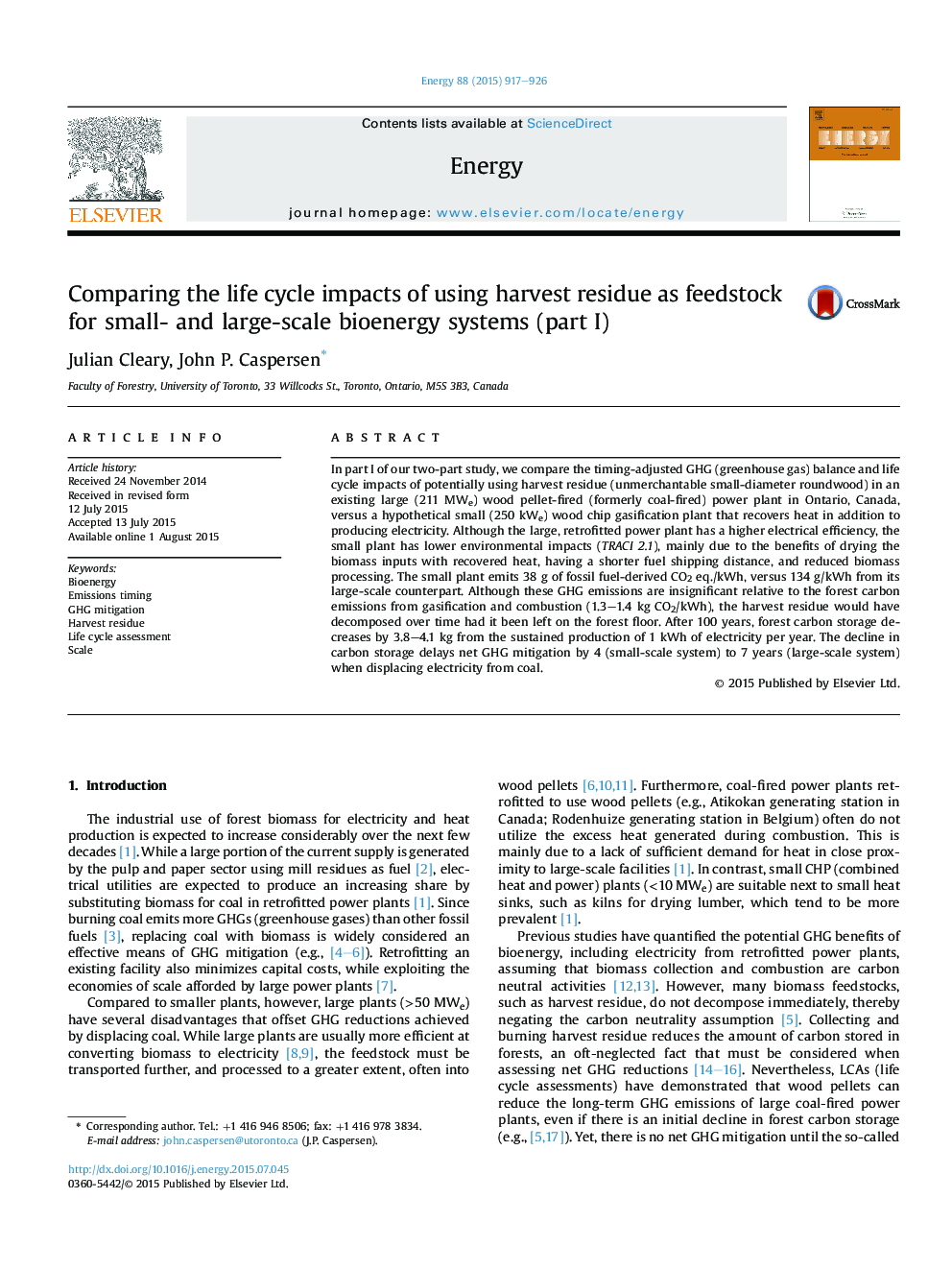| Article ID | Journal | Published Year | Pages | File Type |
|---|---|---|---|---|
| 1732202 | Energy | 2015 | 10 Pages |
•We estimate GHGs and impacts from using harvest residue to displace coal and propane.•Residue is allocated to small- (250 kWe) and large-scale (211 MWe) bioenergy systems.•Non-biogenic GHGs reach 38 (small-scale system) to 134 (large-scale) g CO2 eq./kWh.•Forest C storage decreases by 3.8–4.1 kg from the sustained production of 1 kWh/yr.•Net GHG mitigation begins at 4 (small-scale system) to 7 (large-scale) years.
In part I of our two-part study, we compare the timing-adjusted GHG (greenhouse gas) balance and life cycle impacts of potentially using harvest residue (unmerchantable small-diameter roundwood) in an existing large (211 MWe) wood pellet-fired (formerly coal-fired) power plant in Ontario, Canada, versus a hypothetical small (250 kWe) wood chip gasification plant that recovers heat in addition to producing electricity. Although the large, retrofitted power plant has a higher electrical efficiency, the small plant has lower environmental impacts (TRACI 2.1), mainly due to the benefits of drying the biomass inputs with recovered heat, having a shorter fuel shipping distance, and reduced biomass processing. The small plant emits 38 g of fossil fuel-derived CO2 eq./kWh, versus 134 g/kWh from its large-scale counterpart. Although these GHG emissions are insignificant relative to the forest carbon emissions from gasification and combustion (1.3–1.4 kg CO2/kWh), the harvest residue would have decomposed over time had it been left on the forest floor. After 100 years, forest carbon storage decreases by 3.8–4.1 kg from the sustained production of 1 kWh of electricity per year. The decline in carbon storage delays net GHG mitigation by 4 (small-scale system) to 7 years (large-scale system) when displacing electricity from coal.
